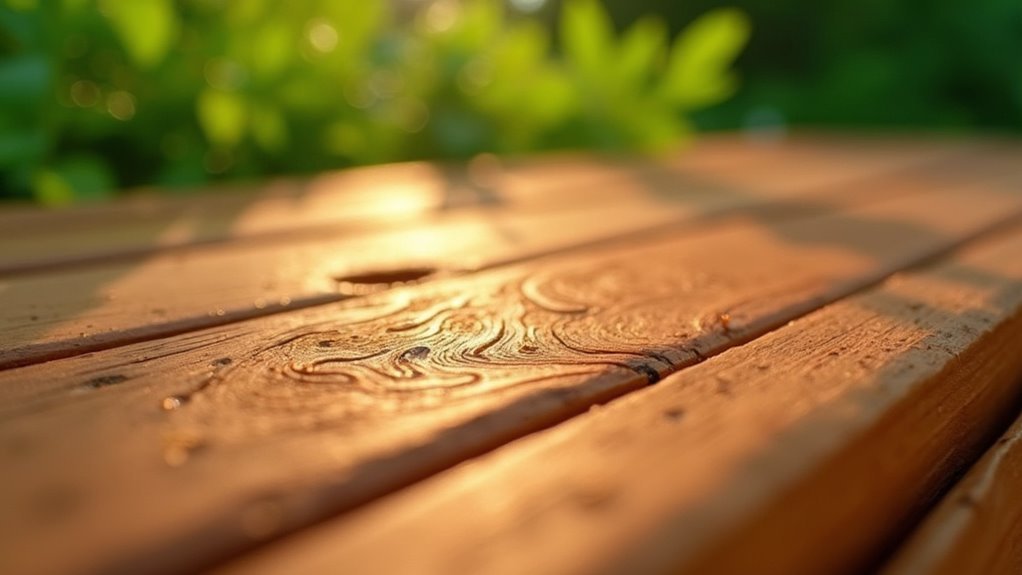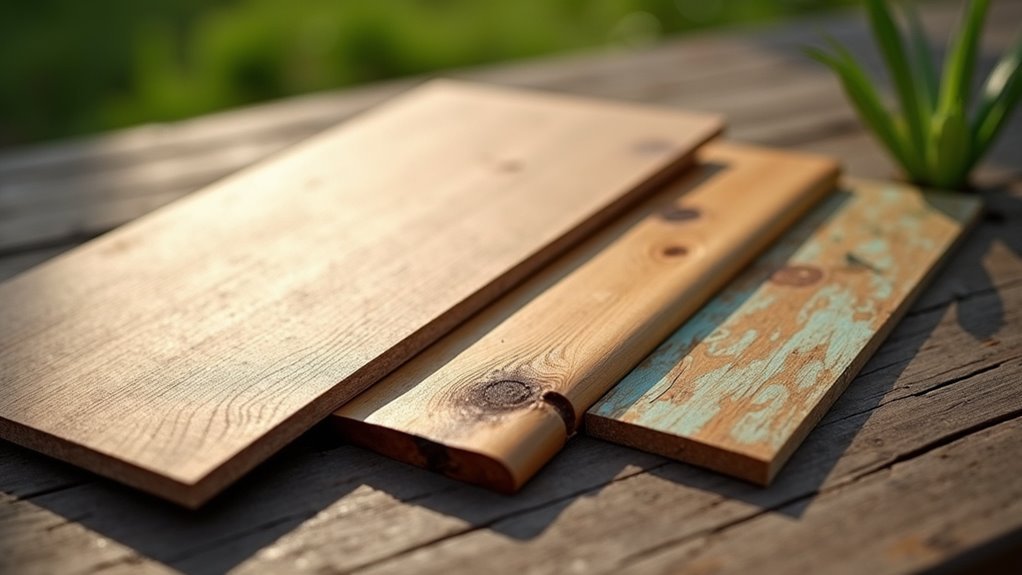You can protect your home from termites using three proven alternatives to traditional wood. Cedar’s natural oils and resins create an impenetrable barrier that termites can’t chew through, making it completely inedible to these pests. Fiber cement siding combines cellulose fiber, cement, sand, and water to mimic wood’s appearance while offering superior termite resistance. Pressure treated lumber uses chemical preservatives that penetrate deep into the wood, rendering it toxic to termites for over 20 years. These materials offer extensive protection strategies worth exploring further.
Cedar: Natural Oils That Repel Termites

Cedar’s natural defense system makes it one of the most effective termite-resistant building materials available.
Cedar’s natural oils and resins create an impenetrable defense against termites, making it nature’s most reliable pest-resistant building material.
You’ll find that cedar’s natural oils and resins make it completely inedible to termites, providing excellent pest control without chemicals. When you choose cedar for home siding, you’re investing in durable protection that won’t warp due to its consistent low-density structure.
You can extend this protection to your landscaping by using cedar mulch around your foundation. Unlike regular mulches that attract termites, cedar mulch creates a protective barrier.
This environmentally friendly approach doesn’t just repel termites—it also deters ants and mosquitoes. By incorporating cedar into your construction and landscaping practices, you’ll prevent infestations while maintaining your home’s visual appeal and considerably reducing potential termite damage.
Fiber Cement Siding: Durable Non-Wood Composition
While cedar offers excellent natural protection, you’ll find even greater termite resistance with fiber cement siding’s completely non-wood composition.
This durable non-wood composition combines cellulose fiber, cement, sand, and water, creating an effective barrier that termites can’t chew through. You’ll eliminate concerns about termite damage since these pests can’t penetrate this material.
Fiber cement siding delivers exceptional pest protection while mimicking traditional wood siding’s appearance. You can customize it to match your home’s aesthetic without sacrificing its termite-resistant properties.
This fireproof material requires minimal maintenance and lasts decades, making it a cost-effective option for residential properties.
You’ll enjoy long-term savings while protecting your investment from destructive termite infestations through this superior building material choice.
Pressure Treated Lumber: Chemical Protection Against Pests

When you need wood construction materials that resist termite attacks, pressure treated lumber offers reliable chemical protection through preservatives forced deep into the wood’s cellular structure. This wood treatment process uses high pressure to penetrate copper-based compounds throughout the material, creating effective solutions for pest resistance.
| Feature | Benefit |
|---|---|
| Chemical preservatives | Termite protection and fungal resistance |
| Deep penetration process | Enhanced durability against environmental factors |
| 20+ year lifespan | Cost-effective for construction projects |
You’ll find pressure treated lumber particularly valuable when wood contacts soil directly, where termite infestations pose the greatest risk. The copper-based preservatives make the durable wood inedible to pests while remaining environmentally friendly, making it ideal for decks, fences, and foundation applications.
Frequently Asked Questions
What Is the Most Termite Resistant Wood?
You’ll find teak is the most termite-resistant wood due to its high density and natural oils that repel insects. Its tropical hardwood composition makes it nearly impervious to termite damage and infestations.
What Is the Best Ground Cover to Prevent Termites?
You’ll want cedar mulch as your best ground cover option since it naturally repels termites with its oils. Alternatively, you can use gravel or crushed stone to create effective physical barriers.
What Is the Best Anti Termite Solution for Wood?
You’ll find pressure-treated lumber works best as it’s chemically infused with termite-resistant preservatives. If you prefer natural options, cedar and redwood contain oils that naturally repel termites effectively.
What Do Termites Hate the Most?
You’ll find termites hate natural oils and resins found in cedar and teak wood most. They can’t stand chemical treatments in pressure-treated lumber or dense materials like fiber cement siding.
In Summary
You’ve got three solid options to protect your home from termite damage. Cedar’s natural oils create a barrier that keeps these pests away, while fiber cement siding eliminates wood entirely from the equation. Pressure treated lumber adds chemical protection that termites can’t penetrate. Each choice offers different benefits, so you’ll want to evaluate your budget, climate, and specific construction needs when making your final decision.





Leave a Reply